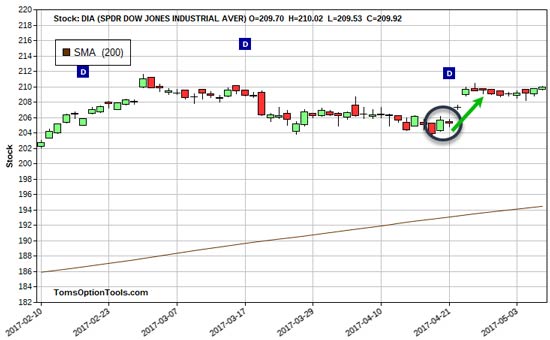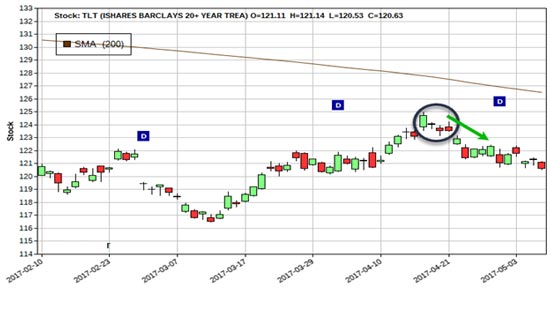Janet Yellen was hawkish at the May 3 Fed meeting. She even referred to the slowed economic growth in the first quarter as "transitory."
Translation: no big deal.
Now you're looking at more than a 90% chance of another interest rate hike in just over two weeks, when the Fed meets again on June 13.
Of course higher interest rates could, and likely will, affect everything from your mortgage and credit card payments to the stocks in your portfolio.
You can protect against that with gold, for instance, or by making trades on the very liquid ETFs I'm about to share with you.
Better than just protection, it's possible to make some serious money here...
Play These Before Yellen's Rate Hike
When the Fed decided to hold rates steady for the next few weeks, it didn't cause a sell-off in the markets, nor did it spur an upward movement of share prices. All in all, it was a pretty ho hum kind of response to the announcement.
The bond market, on the other hand, didn't fare as well. It didn't sell off dramatically, of course, but it was definitely weakened by a couple of points.
This is the primary relationship between stocks and bonds - when one goes up, the other usually (but not always) goes down. Earnings drive stock prices. Interest rates drive bond prices. And this can make it extremely difficult to know exactly how to protect your portfolio (and still profit) in the markets - especially in the face of a 90% or better chance of an interest rate hike.
So here's an easy solution: exchange-traded funds (ETFs).
An ETF is a fund that tracks indexes such as the Dow Jones Industrial Average and the S&P 500. ETFs basically let you trade an entire sector instead of having to pick and choose specific stocks to trade within a sector. ETFs are also a great way for you to hedge against rising interest rates.
When it comes to stocks, a good ETF to monitor is the SPDR Dow Jones Industrial Average ETF (NYSE Arca: DIA). For bonds, the iShares 20+ Year Treasury Bond ETF (NYSE Arca: TLT) is a good way to gauge the bullishness or bearishness of the overall bond market.
Now, bonds and stocks don't always have an inverse correlation, but most of the time, they do. So when the Fed decides to jack up rates on June 13, DIA and TLT are the best two considerations to have in your portfolio for both protection and profits.
Here's a look at how each one moved back on May 3, when the Fed made its latest decision to leave rates untouched:
[mmpazkzone name="in-story" network="9794" site="307044" id="137008" type="4"]
DIA:

TLT:

If, for any reason, the Fed bucks the odds and changes its mind about raising rates and you're feeling bullish about stocks, then you've got a bearish profit opportunity in bonds. That means you could consider opening a bullish trade on DIA and a bearish trade on TLT.
On the other hand, if it does raise rates and you're feeling bearish on stocks and bullish on bonds, then you could consider opening a bullish trade on TLT and a bearish trade on DIA.
In either case, you've got a way to hedge against and profit from any action the Fed takes next month - and any time after that.
Of course, you'll want to talk to your broker before you make any changes to your portfolio...
But to give you an idea of just how well ETFs work, members of my premium trading services have already had the chance to pocket over 343% total gains so far this year on ETFs. To learn more - and find out how to get in on the next opportunity - just click here.
Follow Tom on Facebook and Twitter.
About the Author
Tom Gentile, options trading specialist for Money Map Press, is widely known as America's No. 1 Pattern Trader thanks to his nearly 30 years of experience spotting lucrative patterns in options trading. Tom has taught over 300,000 traders his option trading secrets in a variety of settings, including seminars and workshops. He's also a bestselling author of eight books and training courses.



